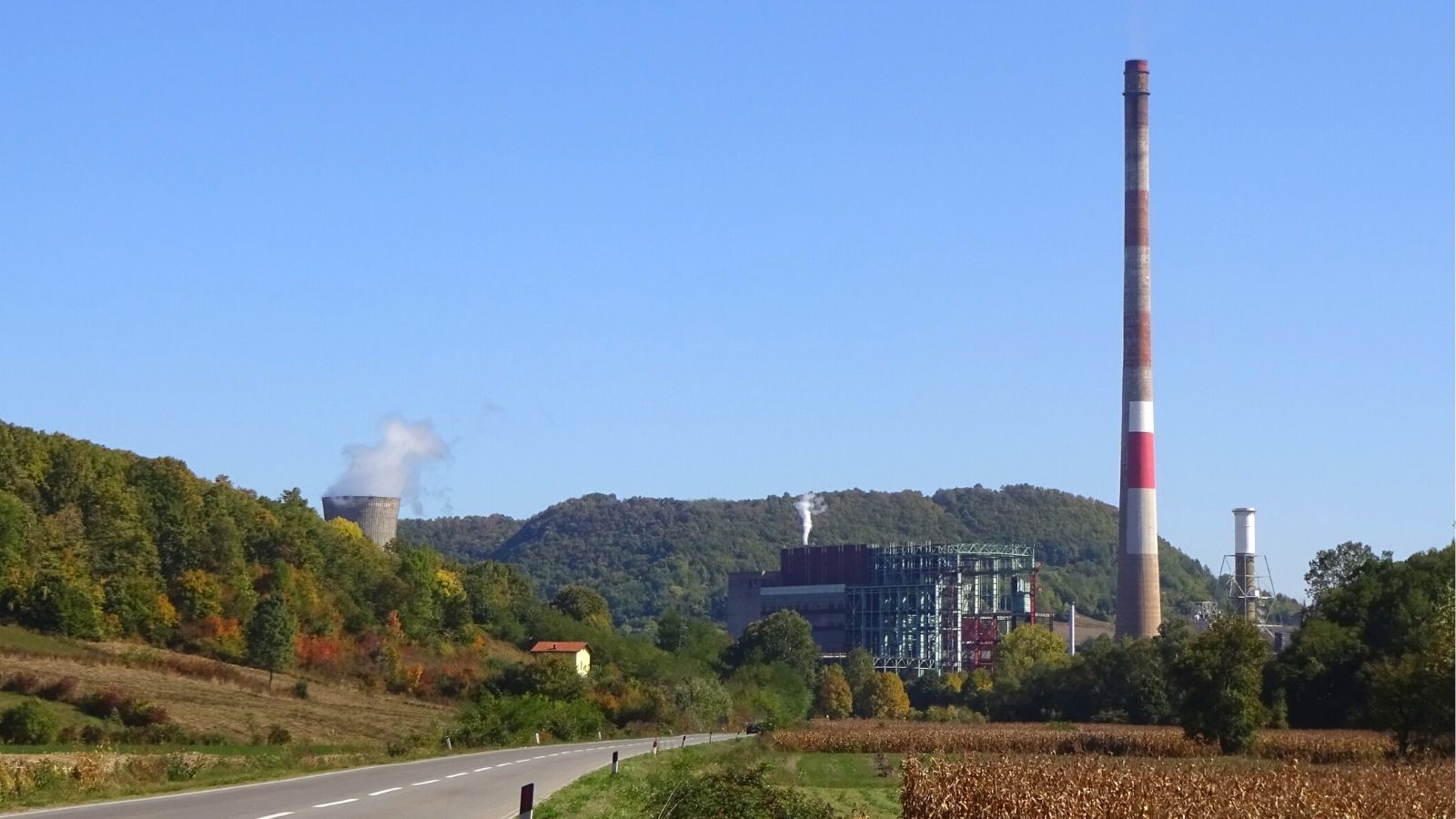Ugljevik power plant, Bosnia and Herzegovina
Commissioned in 1985, the 300 MW coal power plant in Ugljevik, Bosnia and Herzegovina, has become famous for emitting more sulphur dioxide than all of Germany’s coal power plants in 2019.

Stay informed
We closely follow international public finance and bring critical updates from the ground.
Background
To put things in perspective, for every GWh of electricity generated in 2019, Ugljevik emitted 50 tonnes of sulphur dioxide, that is 50 times more than EU’s worst polluter, Bełchatów in Poland, which emitted 1.1 tonnes of SO2/GWh.
The problem is not new, but the paradox is that a financing contract for installing desulphurisation (de-SOx) equipment at Ugljevik was signed more than 14 years ago, and the installation is still not functioning.
Financed by a loan from the Japan International Cooperation Agency (JICA) signed back in 2009, works on the de-SOx equipment started only in 2017 and test operations began in December 2019. It seemed likely that in 2020, SO2 emissions would be significantly lower, finally justifying the EUR 85 million investment.
However, in February 2020 technical problems were reported. The plant’s dust filters, overhauled more than three years ago by the Czech company Termochem at a cost of around EUR 10 million, were faulty, and their proper functioning is reported to be a precondition for desulphurisation. The plant operator spent an additional EUR 100,000 on a study that would show how to address the problem.
In 2021, RiTE Ugljevik, the power plant operator, sought ‘technical assistance’ to obtain the operating permit, adding an extra EUR 100,000 to the costs of this project. The contract was awarded to a company owned by the mayor of Zvornik, raising a host of questions on why the publicly-owned utility RiTE Ugljevik is not capable of obtaining an operating permit itself.
The plant finally obtained an operating permit for the desulphurisation equipment in November 2021. However, its 2022 sulphur dioxide emissions of 85,526 tonnes were barely any lower than those in 2021 (86,774 tonnes). Since 2018, when the Large Combustion Plants Directive entered force under the Energy Community Treaty, there has been no significant decrease in the plant’s emissions.
Out of all Bosnia and Herzegovina’s coal power plants, Ugljevik’s emissions caused the most days of asthmatic symptoms in children, with over 12,000 days in 2020. This is equal to 48 per cent of all such impacts from the country’s coal power plants which are included in the National Emissions Reduction Plan. Ugljevik is also responsible for the highest number of cases of bronchitis in children due to dust emissions, and of hospital admissions because of cardiovascular and respiratory symptoms, with 1,142 cases of the former and 469 of the latter in 2020.
Latest news
MEP Kokkalis: EU shouldn’t penalize coal power in Western Balkans while producing coal-fired electricity itself
Bankwatch in the media | 6 December, 2022Photo: Pippa Gallop / Twitter …
Read moreZašto je zrak balkanskih gradova najzagađeniji u Evropi? | Kontekst
Bankwatch in the media | 21 November, 2022Kvalitet zraka i ove jeseni loš u brojnim gradovima zemalja regije: zašto se svake godine ponavljaju iste epizode i kako utječu na zdravlje …
Read moreMoving Western Balkan district heating systems away from fossil fuels
Press release | 21 November, 2022With winter fast approaching, the need for efficient, clean and affordable district heating in communities throughout the Western Balkans is pressing.
Read moreRelated publications
A race to the top: Western Balkans 2024
Report | 16 July, 2024 | Download PDFA report by Global Energy Monitor, CEE Bankwatch Network and REScoop.eu reveals the Western Balkans have more than 23 GW of proposed utility-scale solar and wind projects—almost 70 per cent more than a year ago.
Air pollution in Ugljevik, Bosnia and Herzegovina
Briefing | 27 March, 2024 | Download PDFUgljevik lignite-fired power plant, located in Republika Srpska, an entity of Bosnia and Herzegovina, is notorious Europe-wide for its extremely high emissions of sulphur dioxide into the air. Despite the exceptionally high stack of the power plant, the town of Ugljevik is still suffering from serious air pollution.
The EU’s proposed Reform and Growth Facility for the Western Balkans
Briefing | 7 March, 2024 | Download PDFThis briefing provides key recommendations to define clearer and narrower goals for the Reform and Growth Facility for the Western Balkans, focusing on social and/or environmental goals.
